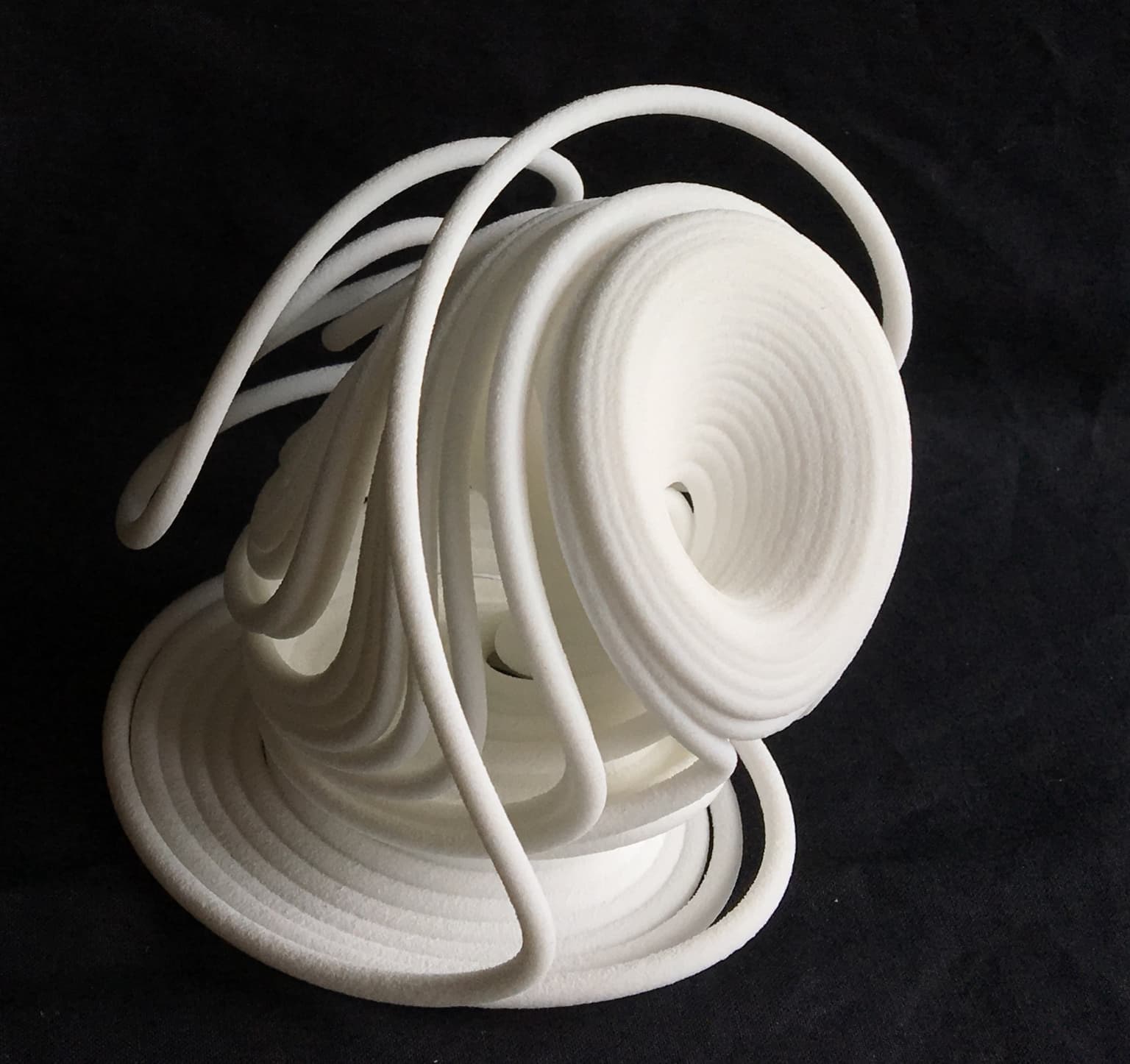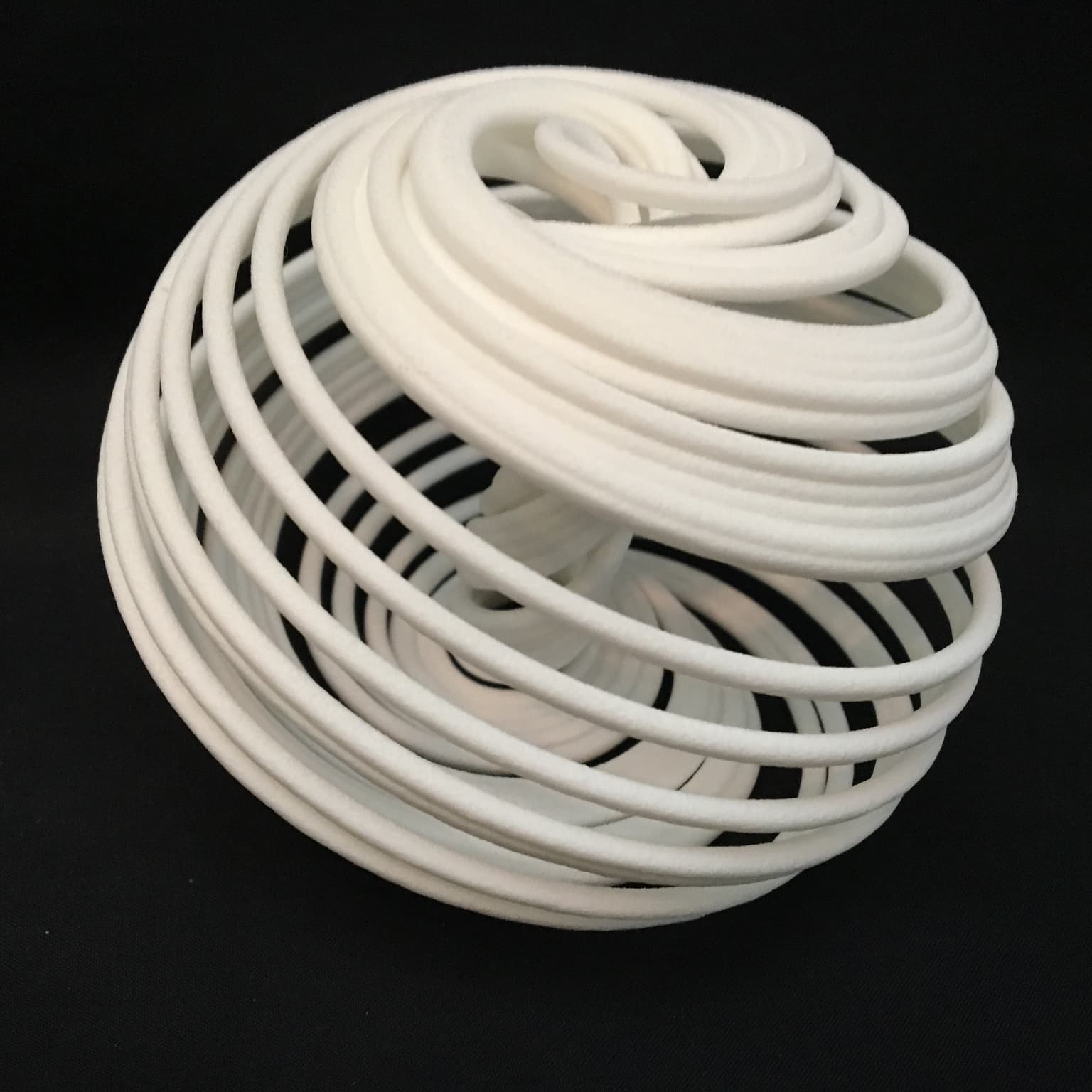2021 Joint Mathematics Meetings
Michael Gagliardo
Artists
Michael Gagliardo
Professor of Mathematics
California Lutheran University
Thousand Oaks, California, USA
Statement
I hesitate to talk about chaos after all of the events in 2020, but, hopefully we can find beauty in mathematical chaos. These two 3D prints are approximations of the Aizawa Attractor and the Dequan Li Attractor. Many people are familiar with the `butterfly shape" of the Lorenz Attractor, however, these two lesser known attractors are just stunning to me. The method for creating these prints is described in the paper, "3D Printing Chaos", which was presented at the Bridges conference in 2018. I used Newton's method to create a solution in Mathematica followed by a python script to import the solution into Rhino as a NURBS curve. This method is generalizable to any dynamical system and the code is available through the github link.
Artworks

The Dequan Li Attractor
10 x 8 x 6 cm
3D Print - Plastic
2016

The Aizawa Attractor
8 x 10 x 10 cm
3D Print - Plastic
2016